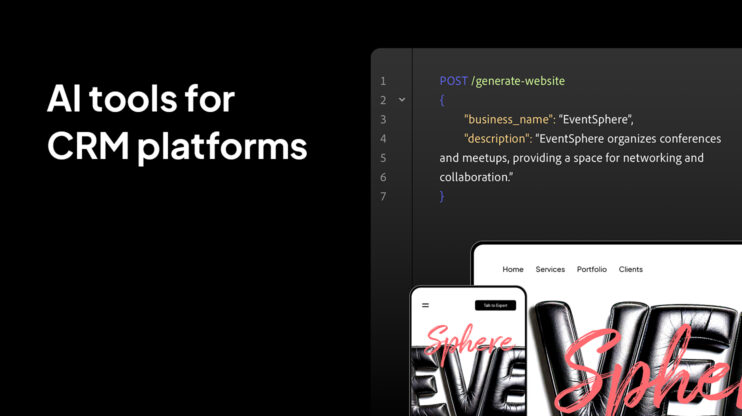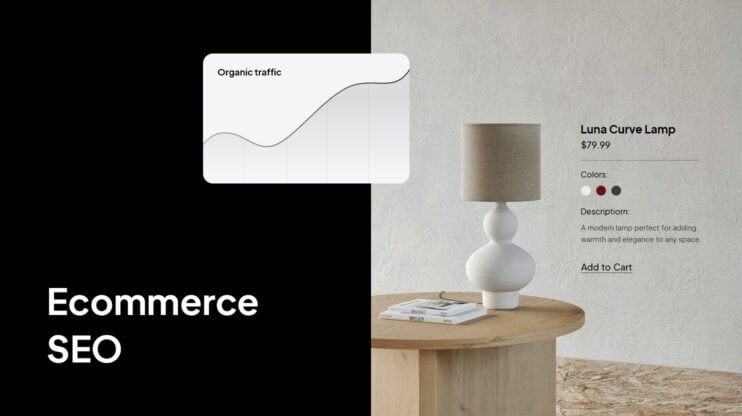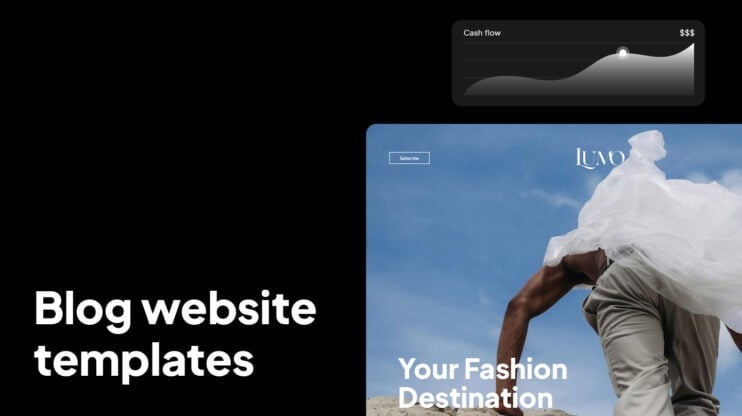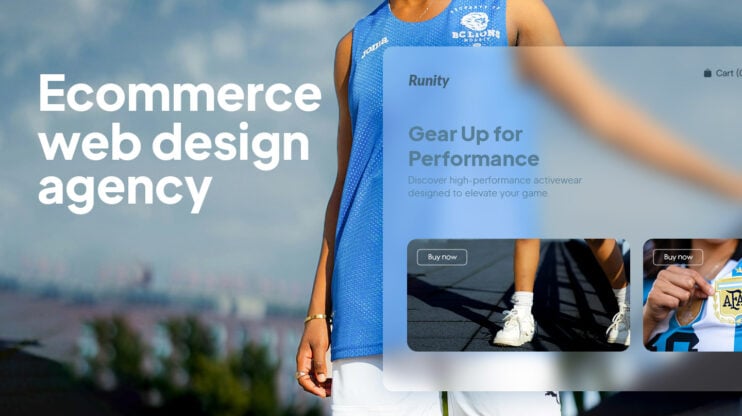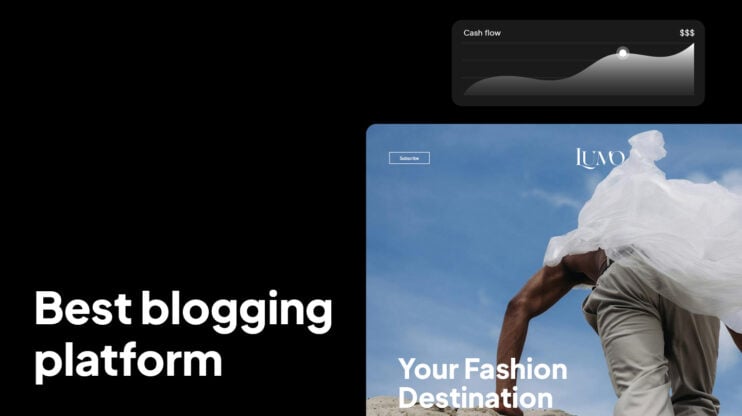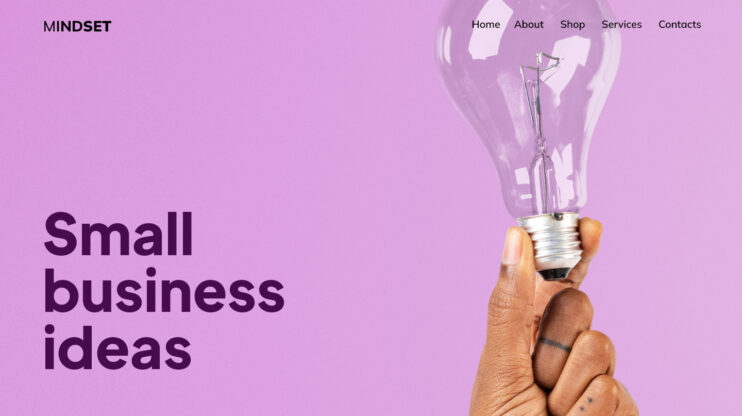White label web design services let your agency sell websites under your brand while a third‑party platform powers the infrastructure. You control the client experience (plans, pricing, support, and branding) without building anything. The payoff is faster launch times, recurring revenue from subscriptions, and higher lifetime value through bundled add‑ons (hosting, SSL, analytics, payments, marketing tools).
To ground this guide, we’ll reference 10Web’s White‑Label Website Builder; the AI‑native, WordPress‑based platform that gives agencies and MSPs a fully branded dashboard, editor, and billing system so you can operate like a product company without writing a platform from scratch. Let’s first discuss the basics.
What are white label web design services?
White label web design services are a fulfillment model: a specialist platform handles the main effort-consuming parts (site generation, hosting, governance), while you deliver a finished experience to clients as your own. That differs from traditional outsourcing, where a vendor may be visible to the client or control pricing and support.
In the white‑label model, your brand stays front‑and‑center across dashboards, emails, invoices, and support touchpoints.
Who are the players, and where does value accrue?
- Agency or freelancer: Owns the brand, sets plans and pricing, manages relationships, and curates service bundles (design, SEO, marketing retainers, whatever they offer).
- White‑label provider: Supplies the AI‑native builder, hosting, governance, and billing rails, making it possible to scale without new headcount.
- End client: Sees a single provider (your agency, for instance), receives a cohesive experience, and can add paid features over time, driving expansion revenue.
Agencies love this model because they can launch sites faster, run with lower day‑to‑day costs, and keep profits steady through subscriptions and add‑on services. Modern white‑label/API tools also help them keep clients longer and sell upgrades more easily than one‑off outsourcing.
Why should you sign up for white label? Market signals you can’t ignore
On the fence about white label web design services? The market has already voted. AI‑ and API‑first tools are changing how websites are built and sold, speeding up client onboarding, lowering delivery costs, and making it easy to bundle recurring services under your brand. The signals below show why white-labeling is shifting from a “nice to have” to the default for agencies, hosts, and telcos. Let’s take a closer look.
APIs & AI are the new distribution
API‑first and white‑label delivery compresses onboarding from months to days, lifts attach rates, and cuts build costs. Across industries, platforms that engage third‑party APIs report significantly higher ecosystem participation and lower development costs. This explains why agencies, hosts, telcos, and enterprise platforms are standardizing on white‑label rails rather than bespoke builds.
Category growth is compounding
Two bellwether segments are moving in lockstep:
- API management is growing from $6.9B (2025) to ~$32.8B by 2032 (~25% CAGR).
- AI website builders are tracking from $3.17B (2023) to ~$31.5B by 2033 (~25.8% CAGR), with SMBs accounting for ~63% of the segment and cloud deployments ~75%.
Together, these indicate a secular shift toward API‑driven, AI‑assisted site creation, which is the exact infrastructure behind white‑label web design.
Distribution is changing
Hosts, registrars, and telcos increasingly bundle websites into SMB offers because they already own billing and support. This is white‑label distribution at scale, not a niche reseller play; it’s how web services reach busy small businesses that won’t compare‑shop “apps.”
How does it work in practice?
A typical agency white label web design workflow looks like this:
- Scope & plan: Package your offering (starter/growth/commerce) and collect inputs.
- AI‑generated draft: Use the builder to produce a first version (content, images, layout) in minutes.
- Revisions & governance: Iterate with design/copy updates, tracked by diffs and permissions.
- Launch: Connect domain, finalize SEO basics, and go live.
- Attach & expand: Add paid features (hosting tiers, SSL, analytics, payments, booking, CRM, or marketing automation) under your brand.
Measure success by Time‑to‑First‑Attach (TTFA) – the time from site creation to the first revenue‑driving add‑on, because TTFA predicts LTV better than “time‑to‑first‑site.” Track the Track Attach Velocity Index (AVI) (how many paid add‑ons in 90 days) to gauge reseller health across your portfolio.
10Web’s white label website builder for agencies
10Web provides a 100% white‑labeled dashboard, a branded editor with a real WordPress backend, and full control over domains/subdomains, system emails, and invoices. You set your plans, pricing, and trials; connect a Stripe account; and manage subscriptions, invoices, payment statuses, and refunds inside your branded interface.

Your Brand. Their Website. Done.
Launch websites fast, with ongoing revenue built in. 10Web’s white-label AI Website Builder lets your agency scale without extra dev time.
Operational advantages for agency/MSP teams
The dashboard includes client & site management, granular roles/permissions for both clients and internal staff, curated plugin presets, and 24/7 priority support. Partners can “become a complete WordPress SaaS platform overnight,” reselling AI site generation and managed hosting while bundling their own services (design, marketing, maintenance) into subscriptions.
Positioning that drives results
Because the stack pairs AI speed with WordPress ownership and extensibility, you avoid the lock‑in of closed builders while keeping performance, SEO, and portability aligned with agency best practices.
Editor experience & governance
10Web’s editor takes a “one editor, three modes” approach so teams can work by intent:
- Prompt‑first (“vibe coding”): Describe the change; see precise, repeatable edits.
- Select‑to‑edit/drag‑and‑drop: Make structured layout and content updates visually.
- Inline code: Handle edge cases or custom components without leaving the workspace.
Under the hood, the system is deterministic (diffs, versioning), token‑aware (design system), and governed (role policies). This reduces risk and slashes time‑to‑change across fleets; an enterprise‑grade advantage over single‑mode editors.
Just as important, the stack moves beyond legacy drag‑and‑drop. Where rigid widget catalogs hit ceilings, a component‑driven model (React/Tailwind) paired with AI enables unique layouts, app‑like interactions, safe refactoring, and consistent accessibility/SEO, without abandoning the WordPress foundation that agencies trust.
White label web design pricing models
Successful white label web design pricing keeps revenue predictable and value clear:
- Per‑site tiering: Starter/Growth/Commerce plans with clear feature gates (e.g., e‑commerce, advanced SEO, multi‑language).
- Usage‑based: Meter AI generations, storage, and bandwidth for fair, scalable pricing.
- Value‑based bundles: Package your white label website design services (strategy, design, SEO, content, care plans) into ongoing subscriptions.
With 10Web, billing runs through your Stripe Connected Account inside the white‑label dashboard, so you maintain margin control, issue refunds, and manage invoices without exposing a third‑party brand to clients.
How to become a white label web design reseller with 10Web
- Request a demo/partner access.
- Apply your brand: Connect your domain(s), upload logo/colors, configure email/invoice branding, and set plans/trials.
- Connect Stripe: Enable subscriptions, invoices, refunds, and payment status management.
- Set defaults: Choose pre‑installed plugins, roles/permissions, and workspace templates; invite clients or enable self‑serve signup.
- Launch onboarding flows: Start selling sites and hosting under your brand.
- Attach revenue drivers: Add payments, analytics, and marketing automations to maximize NRR and AVI.
Availability note: The full reseller stack runs in Stripe‑supported regions. Elsewhere, you can use 10Web’s API and self‑hosted options to integrate AI website generation into your own dashboard.
Conclusion
White label web design services let agencies own the front of house (brand, pricing, support) while AI‑native, API‑first rails handle creation, hosting, and governance behind the scenes. The result is faster launch cycles, stronger retention via bundled upsells, and healthier unit economics over time. With 10Web, you get those rails on top of WordPress, pairing AI speed with ownership, extensibility, and production‑grade governance.
FAQ
What is white labeling in web design?
How much does it cost to pay someone to develop a website?
What is the best white label software?
How do white label web design services work for agencies?
What’s the difference between white label web design and outsourcing?
What are the benefits of offering white label websites under my own brand?
Does 10Web support fully branded dashboards, emails, and billing?

Your Brand. Their Website. Done.
Launch websites fast, with ongoing revenue built in. 10Web’s white-label AI Website Builder lets your agency scale without extra dev time.








